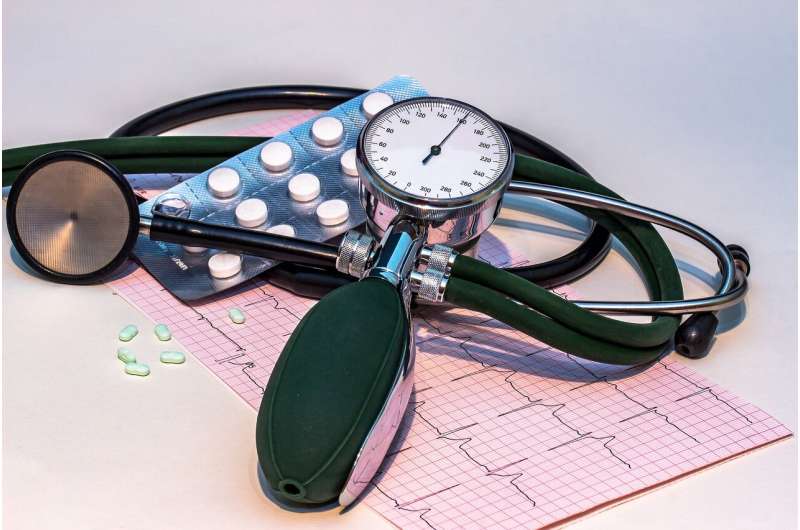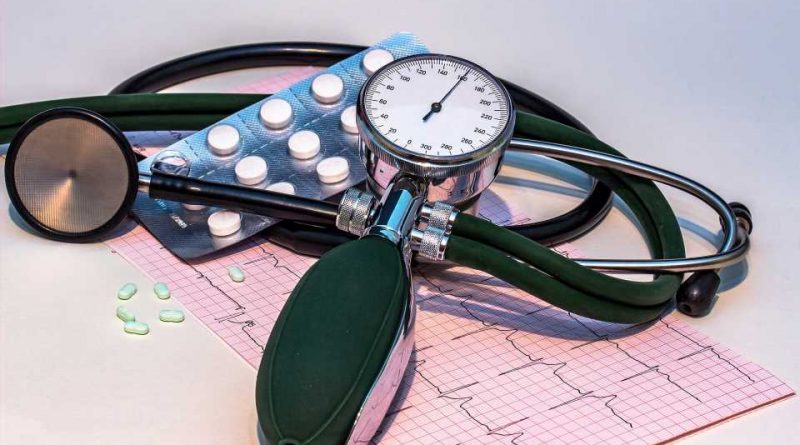buy viagra on the web insurance

Women ages 45 years and older taking estrogen hormone therapy in pill form were more likely to develop high blood pressure than those using transdermal (topical, applied to the skin) or vaginal formulations, according to new research published today in Hypertension, a peer-reviewed American Heart Association journal.
A woman’s body produces less estrogen and progesterone after menopause, diclofenac 20 changes that may increase the risk for cardiovascular diseases including heart failure, according to the American Heart Association.
Hormone therapy may be prescribed to relieve symptoms of menopause, in gender-affirming care and in contraception, and previous studies have found that some hormone therapies may reduce cardiovascular disease risk in menopausal women under 60 years of age or for whom it has been fewer than 10 years since menopause. The authors of this study noted that while high blood pressure is a modifiable risk factor for cardiovascular disease, the potential effects of different types of hormone therapy on blood pressure in menopausal women remain uncertain.
“We know estrogens ingested orally are metabolized through the liver, and this is associated with an increase in factors that can lead to higher blood pressure,” said lead study author Cindy Kalenga, an M.D./Ph.D.-candidate at the University of Calgary in Alberta, Canada.
“We know that post-menopausal women have increased risk of high blood pressure when compared to pre-menopausal women, furthermore, previous studies have shown that specific types of hormone therapy have been associated with higher rates of heart disease,” Kalenga said. “We chose to dive deeper into factors associated with hormone therapy, such as the route of administration (oral vs. non-oral) and type of estrogen, and how they may affect blood pressure.”
This study involved a large group of over 112,000 women, ages 45 years and older, who filled at least two consecutive prescriptions (a six-month cycle) for estrogen-only hormone therapy, as identified from health administrative data in Alberta, Canada between 2008 and 2019. The main outcome of high blood pressure (hypertension) was identified via health records.
First, researchers investigated the relationship between route of estrogen-only hormone therapy administration and risk of developing high blood pressure at least one year after starting the treatment. The 3 different routes of hormone therapy administration were oral (by mouth), transdermal and vaginal application. Additionally, researchers evaluated the formulation of estrogen used and the risk of developing high blood pressure. For this study, the researchers reviewed medical records of individuals taking estrogen-only hormone therapy. The two most common forms of estrogen used by study participants were estradiol—a synthetic form of estrogen that most closely mimics what is naturally produced in women’s bodies in the premenopausal years—and conjugated equine estrogen, an animal-derived form of estrogen and the oldest type of estrogen therapy.
The analysis found:
- Women taking oral estrogen therapy had a 14% higher risk of developing high blood pressure compared to those using transdermal estrogen and a 19% higher risk of developing high blood pressure compared to those using vaginal estrogen creams or suppositories. After accounting for age, a stronger association was seen among women younger than 70 years of age compared to women older than 70.
- Compared to estradiol, conjugated equine estrogen was associated with an 8% increased risk of developing high blood pressure.
Taking estrogen for a longer period of time or taking a higher dose was associated with greater risk of high blood pressure, the authors noted. According to Kalenga, the study’s findings suggest that if menopausal woman take hormone therapy, there are different types of estrogen that may have lower cardiovascular risks.
“These may include low-dose, non-oral estrogen—like estradiol, in transdermal or vaginal forms—for the shortest possible time period, based on individual symptoms and the risk–benefit ratio, Kalenga said. “These may also be associated with the lowest risk of hypertension. Of course, this must be balanced with the important benefits of hormone therapy, which include treatment of common menopausal symptoms.”
The average age of natural menopause among women worldwide is about 50 years of age. Current evidence supports that initiating menopausal hormone therapy in the early stages may have cardiovascular benefits, though not in the late stages of menopause, according to the American Heart Association’s 2020 Statement on Menopause Transition and Cardiovascular Disease Risk: Implications for Timing of Early Prevention. Previous studies have found that menopausal hormone therapy may help relieve symptoms of menopause, including hot flashes, night sweats, mood changes or sleep disturbances.
“Over a quarter of the world’s population of women are currently older than the age of 50. By 2025, it’s estimated that there will be one billion menopausal individuals on the planet,” said study co-author Sofia B. Ahmed, M.D., M.M.Sc., a professor of medicine at the University of Calgary, Alberta, Canada. “Approximately 80% of people going through menopause have symptoms, and for some it lasts up to seven years. While menopause is a normal part of the aging process, it has huge implications for quality of life, economic impact, work productivity and social relationships. We need to give people the information they need to choose the most effective and safe hormonal treatments for menopause.”
The study had several limitations. The impact of different forms of hormone therapy on high blood pressure outcomes were based only on medical records. The study did not include women younger than the age of 45 and did not collect data about hysterectomies or menopausal status; however, the researchers used initiation of estrogen therapy in women over the age of 45 to indicate postmenopausal status. The researchers included estrogen-only therapy in this study, which is most often prescribed for women who have had a hysterectomy (surgical removal of the uterus), whereas women with an intact uterus may receive a combination of estrogen and progestin, another type of hormone. This means these findings may only be considered for women taking estrogen-only hormone therapy, the authors noted. Additionally, the study’s findings cannot offer definitive insights on other populations who may benefit from estrogen hormone therapy, including women who have an intact uterus or women who experience premature or early menopause.
The research study reviewed women in Canada, which may present differences. However, current guidelines in Canada align with U.S. guidelines from the American College of Obstetricians and Gynecologists. Both recommend the use of hormone therapy in women with appropriate indications and note that hormone therapy should not be considered as prevention or treatment of hypertension or heart disease.
The authors will be conducting more research investigating combined estrogen and progestin, as well as progestin-only formulations of hormone therapy and their impact on heart and kidney diseases.
“It’s really important to have greater knowledge on safe and effective hormonal treatments for women during menopause. At the end of the day, it’s an individualized decision about what is best for the person going through menopause and should include open dialogue with their physician or health care team,” Ahmed said. “We need large, randomized studies factoring in all the complexities of hormone therapy around this important transition period in the female lifecycle.”
Co-authors are Amy Metcalfe, Ph.D.; Magali Robert, M.D., M.Sc.; Kara Nerenberg, M.D., M.Sc.; and Jennifer MacRae, M.D., M.Sc.
More information:
Association Between the Route of Administration and Formulation of Estrogen Therapy and Hypertension Risk in Postmenopausal Women: A Prospective Population-Based Study, Hypertension (2023). DOI: 10.1161/HYPERTENSIONAHA.122.19938
Journal information:
Hypertension
Source: Read Full Article
